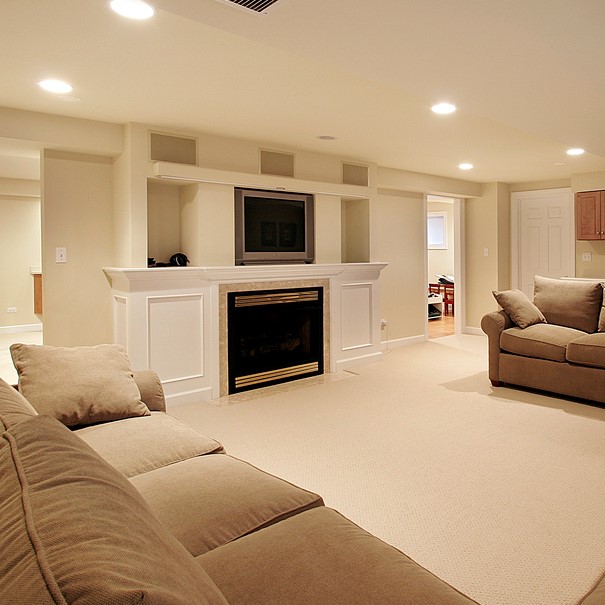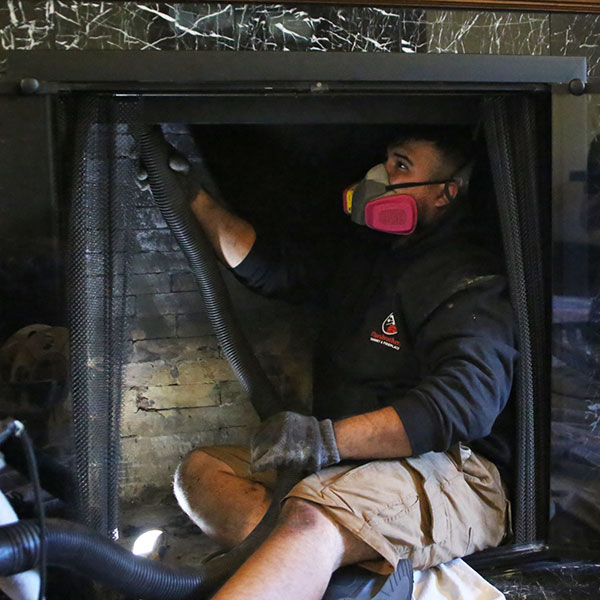Chimney Cleaning Myths You Should Be Wary Of
Just like those scary legends and myths many have told while enjoying a campfire, there are plenty of chimney cleaning myths going around. You may even be familiar with some of them. Chimney cleaning myths is they can be dangerous and make your chimney and fireplace unsafe to operate. Be careful to avoid falling for these 4 common chimney myths.
Chimney cleaning isn’t necessary if you don’t use the fireplace.
 Many homeowners mistakenly believe that you don’t need to clean the chimney if you’re not using the fireplace. However, that is not the case. Even if you’re not using the fireplace, you still need annual chimney inspections and periodic cleaning. That’s because cracks in the chimney cap, masonry, and other components will expose it to moisture that can affect its structural integrity, eventually leading to extensive repairs. Also, small animals, pests, dust, and debris can accumulate in the chimney. The damp and humid conditions and decaying organic matter can create conditions for mold and bacteria to grow. It can give your house a foul odor, attract rodents, and even cause health issues in some individuals, especially those with allergies, asthma, or respiratory conditions.
Many homeowners mistakenly believe that you don’t need to clean the chimney if you’re not using the fireplace. However, that is not the case. Even if you’re not using the fireplace, you still need annual chimney inspections and periodic cleaning. That’s because cracks in the chimney cap, masonry, and other components will expose it to moisture that can affect its structural integrity, eventually leading to extensive repairs. Also, small animals, pests, dust, and debris can accumulate in the chimney. The damp and humid conditions and decaying organic matter can create conditions for mold and bacteria to grow. It can give your house a foul odor, attract rodents, and even cause health issues in some individuals, especially those with allergies, asthma, or respiratory conditions.
Metal liners don’t require cleaning.
Many homeowners are under the impression that metal liners are a maintenance-free solution. While metal liners are more durable, provide greater energy efficiency, and require less maintenance, your chimney still requires routine inspections and periodic cleaning. Creosote and other corrosive combustion gases can accumulate on any type of liner, including metal and stainless steel. An accumulation of 1/8″ more of creosote is hazardous and should be removed to prevent a chimney fire. A chimney fire can cause extensive damage to your chimney and home. Although stainless steel liners offer better corrosion resistance, they still require annual inspections for creosote accumulation, corrosive residue, and damages.
 It’s easy to clean the chimney yourself.
It’s easy to clean the chimney yourself.
Chimney cleaning is not as easy it may appear. It requires specialized tools, supplies, and equipment to safely and efficiently remove hardened creosote and other residues without damaging the masonry or components. Also, the interior of the chimney is very narrow and dusty. It is dangerous to clean the chimney without a respirator and protective equipment. A Certified Chimney Sweep® has extensive training and knowledge of the chimney system, including vents and attached heating appliances. They are also trained to spot problems to mitigate the risk of fire, exposure to harmful gases, and chimney repairs.
Burning seasoned wood doesn’t require chimney cleaning.
Wood that has been seasoned or dried for six months or more produces less smoke and creosote due to its low moisture content. Although burning seasoned wood is cleaner than burning green or fresh wood, it still produces creosote that will need to be removed during chimney cleaning. In its initial stage, creosote is a powdery substance that is easy to remove. However, it will harden into a dark, tarry substance known as stage 3 or glazed creosote. Stage 3 creosote is highly flammable and very difficult to remove without professional assistance.
The post Chimney Cleaning Myths You Should Be Wary Of appeared first on Fluesbrothers Chimney Service.